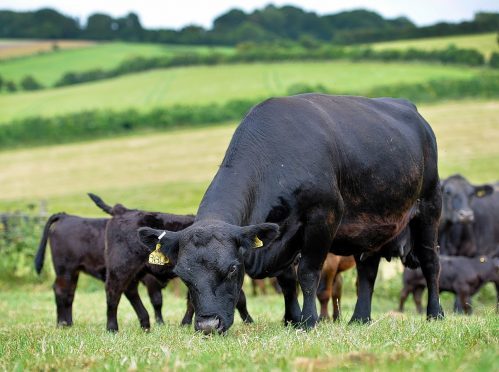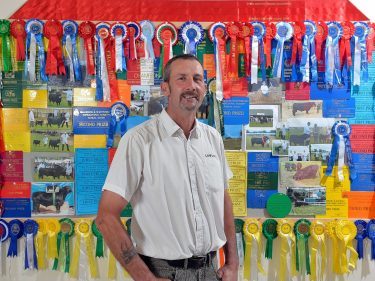Lowline cattle are the product of a research project carried out at the Trangie Research Centre in New South Wales in 1929.
Aberdeen-Angus cattle were imported from Scotland, USA and Canada and three herds were created and named the lowline, midline and highline herds.
The Lowline cattle proved to be more efficient, surpassing those with high growth rate the highline – and the mid line which was a control group.
Despite being 40% smaller than a normal beef breed, the Lowline cattle are proving a sound investment for a farm in Subhampton, Dorset managed by David Maughan.
“Although the cattle are small, you get more money per acre. Over time, the research revealed that Lowline cattle converted grass into beef at a faster pace than larger cattle,” said Mr Maughan.
The farm comprises 75 acres of grassland to carry just over 140 cattle. This has expanded from the initial 10 Lowlines imported from Canada in 2010.
Within the herd there are approximately 20 surrogates – these are Highlands and pure Aberdeen-Angus which they place fertilised embryos in to form Lowline cows.
The Lowline originated in Scotland and the cattle are 100% Aberdeen-Angus due to being a closed-herd with no blood lines introduced.
What distinguishes the Lowline breed is its small size as throughout all stages of growth, the cattle remain 60% the size of a normal beef breed. The size has remained constant throughout all Lowline breed history.
According to Mr Maughan, sustainability is a significant factor when considering the advantages of the Lowline breed. They are all grass fed resulting in no bought in feed and returning good financial margins.
Mr Maughan said he believed they fit ‘brilliantly’ into the farm and they have allowed him to increase cattle numbers.
The breed also offers easy calving as the cows are smaller than an average beef cow, weighing between 18 and 24kg at birth.
The Lowline’s pregnancy lasts on average 271 days which is two weeks shorter than average cattle. As a result the Lowline cattle have an extra two weeks of milking.
Their unique size does not affect the taste of the beef, said Geoff Roper who co-owns the Lowlines at the Dorset farm.
Mr Roper said: “While there are obvious differences in height, the Lowline has retained all the beefy qualities of its ancestors. We can trace our bloodlines right the way back to Scotland so we know the heritage of our stock and we have had interest from farmers in the country who can see how the smaller breed would fit in to their operation.”
In terms of potential buyers for Lowline cattle, Mr Maughan said that more farmers could be interested, including dairy producers.
Herds have already been established in Yorkshire and Cumbria and it has been predicted that within 12 months Lowlines could make their appearance in Scotland. The Lowlines have acquired Elite Health Status and have been proven to tolerate very cold temperatures.
Mr Maughan is more than happy with the Lowline breed and said: “Farmers can keep a cow 1/3 size smaller which is yielding as much as a larger sized cow.”

